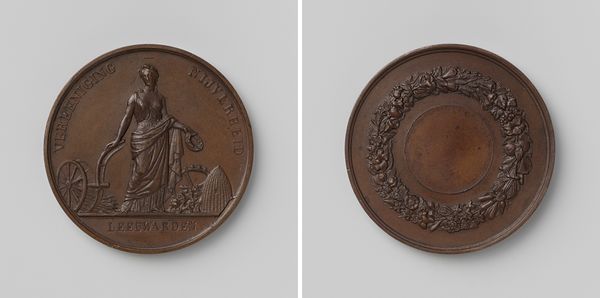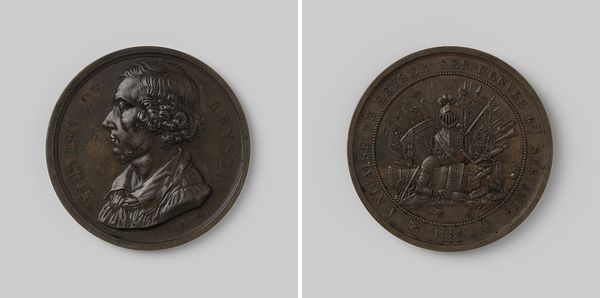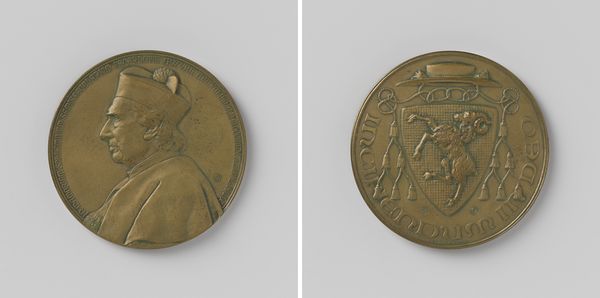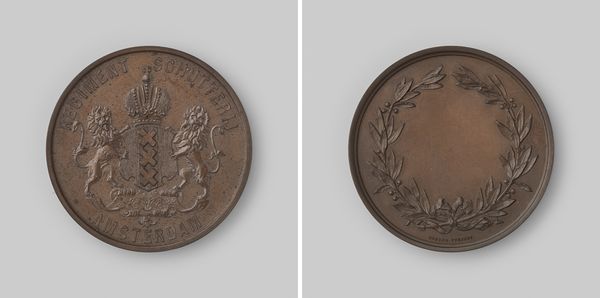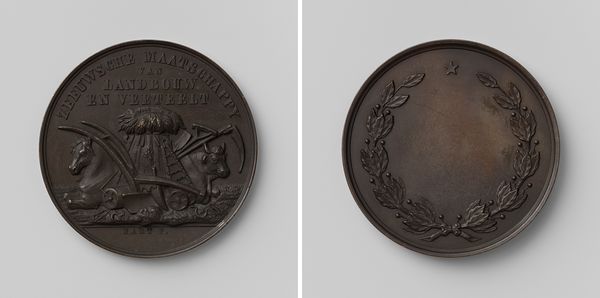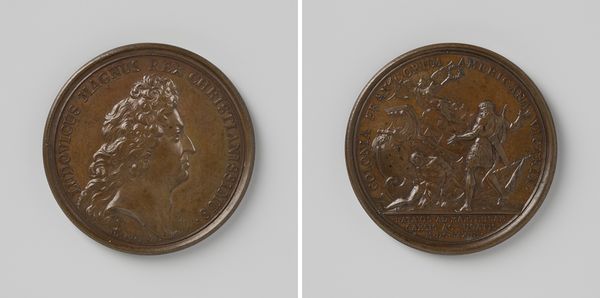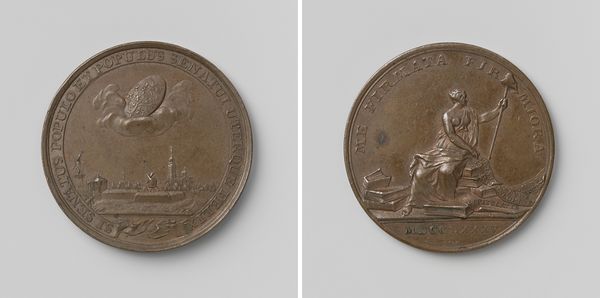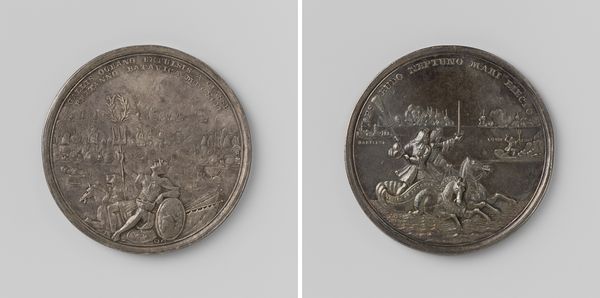
metal, sculpture
#
portrait
#
baroque
#
metal
#
sculpture
#
sculpture
#
history-painting
Dimensions: diameter 4.8 cm, weight 49.86 gr
Copyright: Rijks Museum: Open Domain
Curator: This remarkable metal artwork, crafted by John Croker in 1710, is titled "Inname van Bethune, St. Venant en Aire". The medal commemorates a significant historical event, can you tell me what you think? Editor: My first impression is of a rather stoic piece; the cool bronze tones give a sense of austere formality. The balance is interesting; it seems to want symmetry but avoids it, which keeps the eye engaged. Curator: Absolutely, this medal was struck to celebrate the capture of Béthune, St. Venant, and Aire during the War of the Spanish Succession. Queen Anne of Great Britain played a vital role in this conflict. Editor: Yes, I notice the Queen Anne portrait. Observe the craftsmanship in rendering her profile, from the delicate rendering of her up-do hair style to the strong jawline, it projects authority and perhaps hints at a certain restrained power, which echoes England's status at the time. Curator: Precisely. Medals like this weren't just decorative objects; they served as political tools, reinforcing national pride and promoting the legitimacy of the ruling monarch and her involvement in major political events. Editor: The reverse is equally fascinating. There's such density of visual elements around that central armour: cannons, flags. This piling of symbol onto symbol communicates so much military might. Curator: Exactly. These elements signify triumph, strategic planning, and military victory. It reflects the period’s culture, using allegorical language to convey contemporary political agendas, especially celebrating specific British military achievements on the European stage. Editor: Looking at the texture, I see a contrast. The Queen is almost smooth, polished and in high relief, whereas the symbolism is more muted, textural, and in low relief. Curator: It seems that we are reflecting on its value both in its artistic execution and its cultural value, which brings to our eyes, to this small artwork a view of that historical period in Europe. Editor: I’m struck by how something so small can communicate so much about power, culture, and artistic skill. The formal language of its visual rhetoric speaks volumes.
Comments
No comments
Be the first to comment and join the conversation on the ultimate creative platform.
